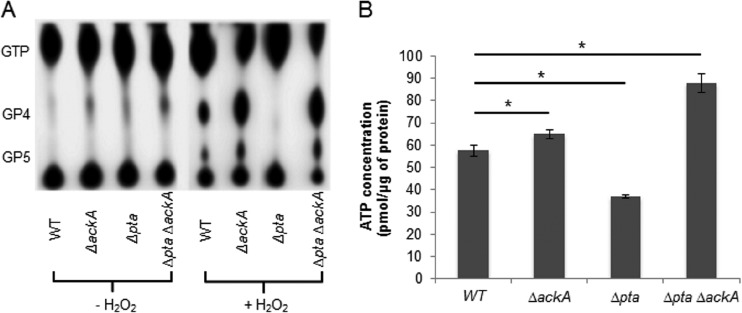FIG 4.
Accumulation of (p)ppGpp and cellular ATP generation under stress conditions. (A) The (p)ppGpp accumulation of the wild-type strain was compared with that of the ΔackA, Δpta, and Δpta ΔackA strains grown in FMC medium supplemented with (+) and without (−) 0.003% hydrogen peroxide. Strains were labeled with [32P]orthophosphate in FMC medium. 32P-labeled nucleotides were extracted by adding an equal volume of 13 M formic acid, followed by three freeze-thaw cycles in a dry ice-ethanol bath. Acid extracts were spotted onto PEI-cellulose plates for TLC in 1.5 M KH2PO4 buffer. (B) The amount of ATP in the wild-type strain and the ΔackA, Δpta, and Δpta ΔackA mutants was measured after they were grown to early exponential phase in FMC medium supplemented with and without 0.003% hydrogen peroxide (see details in Materials and Methods). Fifty microliters of cell lysate was reacted with an equal volume of the luminescent reagent. Luminescence intensity was measured using a Synergy 2 multimode microplate reader. Values shown are the means ± standard deviations for cell lysates from three separate cultures. *, the result differs significantly (P < 0.05, Student's t test) from that for the wild-type genetic background. The results are expressed as means from triplicate assays for three independent isolates.

